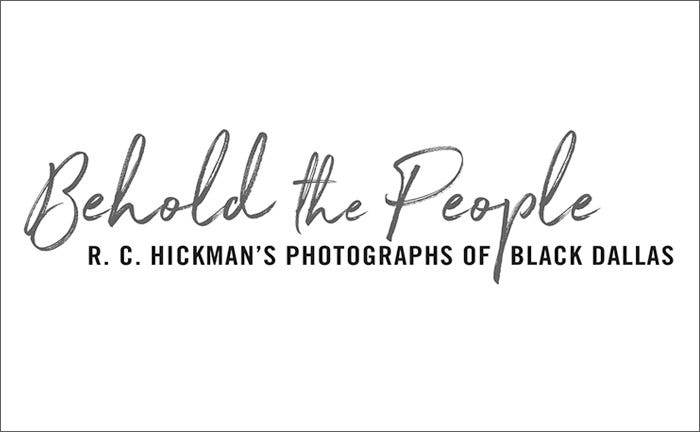“One foot on the running board and one on the ground. I had my camera cocked and the engine running.”
While perusing the PHIT archives, this brochure from the last century was recovered. 1987. The Barker History Center, now known as the Briscoe Center for American History, had acquired the photographic collected of R.C. Hickman, an intrepid and hard working photographer from the 1950s.
Hickman photographed his local community, the Black neighborhoods in Dallas. Those neighborhoods were rarely documented by the newspapers, so this was important and historical work.
“We just weren't visible in the white papers. In fact, blacks didn't get in the paper, period. According to the white newspaper, we didn't get married, because our pictures did not appear in their paper, and very little news about us ever appeared in their paper.”
Hickman took photos for Jet and the NAACP. Part of his assignments included portraying the unequal conditions of public facilities. This was the evidence that was presented to the courts in the legal battles over segregation.
Jet, at one point, called up Mr. Hickman, ”We want you to go to Italy, Texas and take photographs of the only colored city hall in the world. Take pix of the installation of the officers of the Colored City Hall in Italy, Texas."
“It just so happened, I arrived in the daytime, because I had never been to Italy before, and I didn't know really where I was going. And, this colored city hall was out in a field in the black community. No paved streets, just out in a field.”
“The very next day I got another telegram that said, "Go back to Italy, Texas, Mr. Hickman, and take a picture of the white city hall."
He told them, "This is going to be a little dangerous, if I'm not careful.”
“This time, I went in my own private car. Certainly with no names on it like THE JET newspaper.”
“So, I took my camera, and I shot one picture one time. I was a one-time man. I put that camera back into my car and got out of town. The next week in JET, this is what appeared: the picture of the white city hall and the picture of the colored city hall. That's all.”
For the NAACP, he also took pictures comparing the science lab of the white school and the African-American school.
But the most dangerous assignment was the Mansfield School desegregation saga. In 1957, a mere 68 years ago, Mansfield High was the first attempt to desegregate high schools in Texas.
It was a nasty business. It gleaned national headlines, but Eisenhower was unwilling to send troops into Texas. In Mansfield, the Texas Rangers were sent in. It wasn’t until Little Rock a year later that federal troops were involved.
Although deaths were threatened, and effigies were lynched, there were no major injuries. The Mansfield Black community decided that this wasn’t the hill they wanted to die on, and they continued to send their children to a High School in Fort Worth, which was 40 miles away.
Hickman took pictures of the effigies hanging from the American Flagpole, but it was a dangerous situation.
Hickman took his shots with “one foot on the running board and one on the ground. I had my camera cocked and the engine running.”
Now that is true dedication to covering the news.
And that’s not a story you are going to find covered in the textbooks.
Here’s a book where you read about the story.
Hickman’s photographs are stored in the Briscoe.
The Briscoe sponsored an exhibition in 2019.
March 11–July 13, 2019
Briscoe Center for American History, Austin, Texas
Hall Gallery
It’s not likely to happen again, so go on by the Briscoe and be sure to ask ahead of time that you want to see the Hickman photos.






